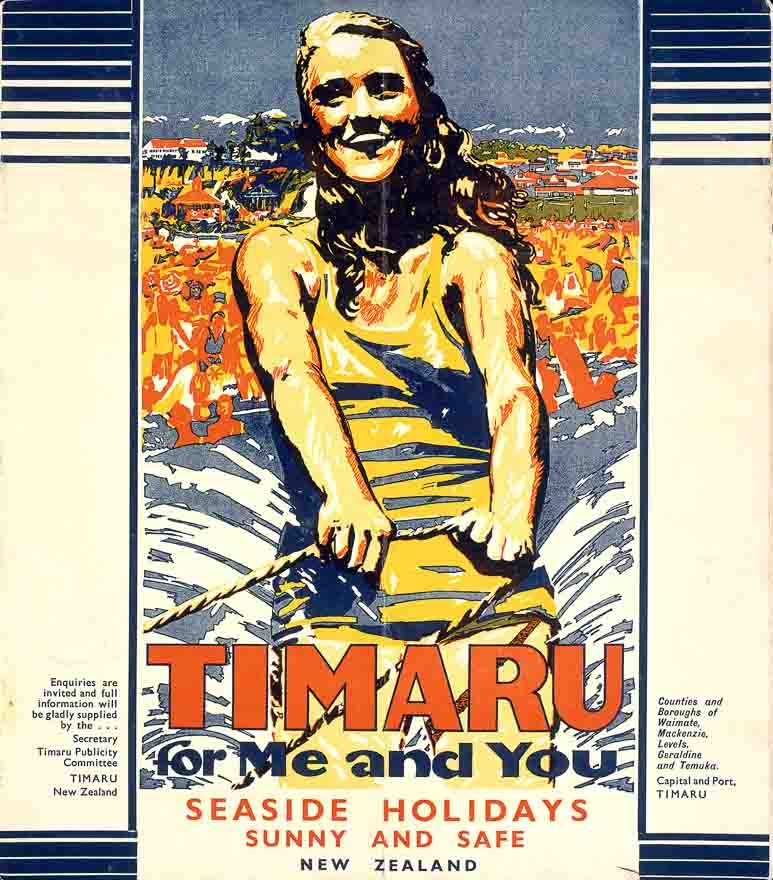
New Zealand Railways publicity poster for Caroline Bay, Timaru, 1935
Caroline Bay offered an entire programme of activities for holidaymakers over the summer. Starting on Boxing Day and finishing in mid-January, there were concerts and dances, sand-modelling contests, parades for pets and ‘Tiny Tots’, mother–son and mother–daughter contests and a wide selection of beauty contests. The New Year’s Eve midnight bonfire was the highlight, but the Miss Caroline Bay Bathing Beauty Contest was the glamour event through to the 1960s.
The end-of-year prize for being a New Zealander
Come late December and thousands of Kiwis get ready for their annual holiday. They look forward to lazy days at the beach or the bach (or crib), games of backyard cricket, food on the barbie and the holiday uniform of shorts, jandals and T-shirts. From before Christmas until after the New Year, we take our summer holidays – some people have said it’s our end-of-year prize for being a New Zealander.
We haven’t always had summer holidays. Of course, many of us still don’t – we want to shop, go to the movies or watch TV, and we expect everything to be available, so hospitals, power supplies, police and much more still run 24/7. And if we live on a farm, then summer means more work, not holidays.
The summer break as we know it started to be popular in New Zealand from the 1920s. Restrictions on work hours meant that people began to have clearly defined days off around Christmas from the late 19th century.
Improved transport links boosted the summer break. The number of automobiles grew rapidly in the 1920s and 1930s, but most inter-war holidaymakers travelled by rail. On Christmas Eve 1934, five express trains carrying 1800 travellers left Wellington for stations along the North Island main trunk line. Four years later, eight trains ferried more than 3000 passengers northwards. The New Zealand Herald described the bustle of Auckland station at Christmas 1935.
Throngs of people in the most diverse kinds of holiday attire, people laden with suitcases, bags and parcels of every conceivable shape and size, and above all children, armed with buckets and spades, toy aeroplanes, squeakers and a hundred and one other toys, all hurried or were hurried down the platforms, until it seemed that everyone in Auckland was bent on leaving the city.
By the 1950s the private automobile was the preferred means of getting away from it all. With cars, people could pack food and gear for prolonged holidays over the Christmas–New Year period. As cars took people further away from home, campsites were developed. Beaches were ideal places for camping, and from the 1920s, permanent baches or cribs could be found at many beaches. Caravans came on the scene from the 1940s, giving holidaymakers even more options.
Summer holidays at the beach in the 21st century are not as easy as they used to be. Coastal land seems prime for people building large holiday homes, and in some areas, the humble Kiwi bach is under threat. Areas such as Pauanui, once a local holiday spot, have been transformed into upmarket beach suburbs. Some beachside camping grounds have also closed as their owners sell up to developers.

Community contributions